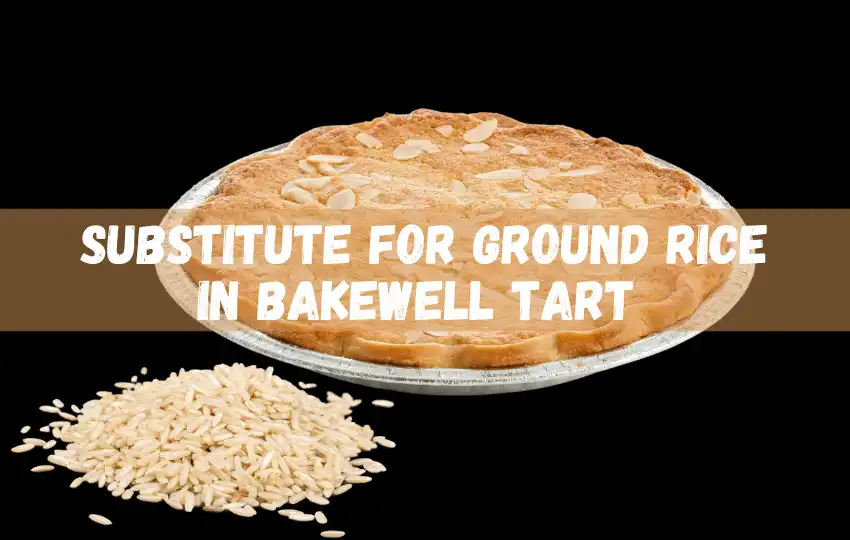Bakewell tart is a traditional British dessert that is valued by millions of people all over the world. It is a recipe passed down through generations and has stood the test of time.
The standard recipe for Bakewell tart includes ground rice, but what happens when you cannot find ground rice in the store or you are allergic to it?
In this post, we will be exploring 23 fantastic substitutes for ground rice in Bakewell tart with measurement ratios and how to use them, so you can enjoy this delicious dessert, no matter what.
In short, " What can I use instead of ground rice?" Almond Flour, Oat Flour, Cornmeal, Semolina, Polenta, Rice Flour, Buckwheat Flour, Coconut Flour, Hazelnut Flour, Ground Flaxseed, Ground Hazelnuts, Graham Cracker Crumbs, Coconut Flour and many more.
What is Bakewell tart, and what does Bakewell tart taste like?
Bakewell tart is a traditional British dessert that originated in the town of Bakewell, England. It consists of a shortcrust pastry base filled with a layer of jam, usually raspberry or strawberry, and a rich almond frangipane filling.
The top is often adorned with a layer of flaked almonds or icing.
In terms of taste, Bakewell tart is a delightful combination of sweet, tangy, and nutty flavors. The shortcrust pastry provides a buttery and crisp base, while the layer of jam adds a fruity sweetness and slight tartness.
The frangipane filling, made with ground almonds, eggs, sugar, and butter, contributes a moist and nutty texture with a rich, distinct almond flavor.
When properly baked, the tart achieves a balance between the sweet jam, the moist frangipane, and the buttery pastry.
The blend of flavors and textures creates a pleasant and indulgent dessert experience.
It’s worth noting that variations of Bakewell tart exist, with some recipes incorporating additional elements such as a layer of custard or a drizzle of icing on top.
These variations can slightly alter the overall taste, but the core components of the tart remain consistent.
Uses of ground rice
Ground rice is an incredibly versatile ingredient that can be used in various recipes. From breakfast to dinner, ground rice can be used to create delicious and nutritious dishes.
One popular way to utilize ground rice is by using it as a binding agent in meatballs and other types of patties.
When combined with breadcrumbs, ground rice creates a texture that helps hold the ingredients together and keeps the patty from falling apart when cooking.
Ground rice also adds flavor and nutrition to the dish, providing essential minerals such as magnesium and iron.
Another common use for ground rice is as an alternative to flour in baked goods. In soups or sauces, it is used as a thickening agent or replaces some of the all-purpose
flour with ground rice when baking cakes or bread for an added boost of nutrition. Ground rice can be used as a substitute for white or brown sugar in recipes like cookies or granolas for a healthier sweet treat.
Ground rice can also be incorporated into savory dishes like stir-fries and fried rice.
It provides a lightness that allows vegetables and proteins to take center stage without becoming too heavy or dense.
Additionally, adding cooked ground rice to salads makes them more filling while still keeping them light on calories – an ideal way to add extra protein without overloading on carbs!
Where to buy ground rice?
If you are looking for ground rice where to buy, there are a few other places you can go. Many specialty food stores carry it, as do some international grocery stores.
You can also order online from many retailers that provide a variety of diverse flavors and types of ground rice.
Best substitutes for ground rice in Bakewell tart
1. Almond Flour – a great substitute for ground rice in Bakewell tart
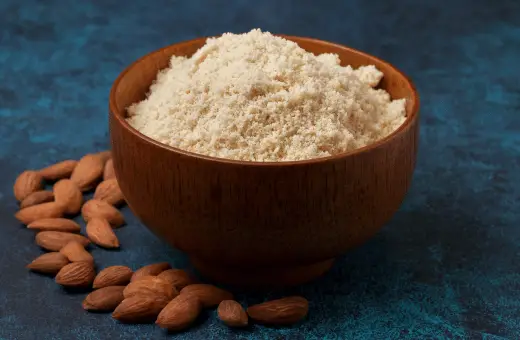
Almond flour is an excellent substitute for ground rice in Bakewell tart. It is made from ground almonds, making it a perfect gluten-free option.
Ratio or measurement: To use almond flour, replace the ground rice in your recipe with an equal amount of almond flour.
2. Oat Flour – similar to ground rice in Bakewell tart
Oat flour can also use as a substitute for ground rice. It is made from ground oats, making it a healthy alternative for those looking to decrease their intake of refined flour.
Ratio or measurement: To use oat flour, replace the ground rice in your recipe with an equal amount of oat flour.
3. Try Cornmeal to replace ground rice in Bakewell tart
Cornmeal is another great alternative for ground rice in Bakewell tart. It is made from ground corn, making it a gluten-free option.
Ratio or measurement: To use cornmeal, replace the ground rice in your recipe with an equal amount of cornmeal.
4. Semolina – similar to ground rice in Bakewell tart
Semolina is a coarsely ground cereal made from durum wheat. It is commonly used in Italian and Middle Eastern cuisine.
Ratio or measurement: To use semolina as a substitute for ground rice in Bakewell tart, replace the ground rice in your recipe with an equal amount of semolina.
5. Polenta – a tasty alternative for ground rice in Bakewell tart
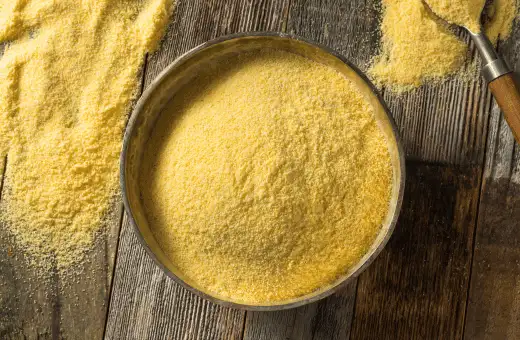
Polenta is a traditional Italian dish created from boiled cornmeal. It can use as a replacement for ground rice in Bakewell tart.
Ratio or measurement: To use polenta, replace the ground rice in your recipe with an equal amount of polenta.
6. Rice Flour – similar to ground rice in Bakewell tart
Rice flour is created from finely milled rice grains and is commonly used in gluten-free baking. It can use as a substitute for ground rice in Bakewell tart.
Ratio or measurement: To use rice flour, replace the ground rice in your recipe with an equal amount of rice flour.
7. Try Buckwheat Flour instead of ground rice in Bakewell tart
Buckwheat flour is a gluten-free flour created from buckwheat groats. It has a nutty savor and is commonly used in pancakes and crepes.
Ratio or measurement: To use buckwheat flour as a substitute for ground rice in Bakewell tart, replace the ground rice in your recipe with an equal amount of buckwheat flour.
8. Coconut Flour – similar to ground rice in Bakewell tart
Coconut flour is flour created from dried coconut meat. It is a popular gluten-free flour that is commonly used in baking.
Ratio or measurement: To use coconut flour as a substitute for ground rice in Bakewell tart, replace the ground rice in your recipe with one-third the amount of coconut flour.
9. Hazelnut Flour – a decent replacement for ground rice in Bakewell tart
Hazelnut flour is a delicious flour made from ground hazelnuts. It has a nutty savor and is commonly used in baking.
Ratio or measurement: To use hazelnut flour as a substitute for ground rice in Bakewell tart, replace the ground rice in your recipe with an equal amount of hazelnut flour.
10. Ground Flaxseed – similar to ground rice in Bakewell tart
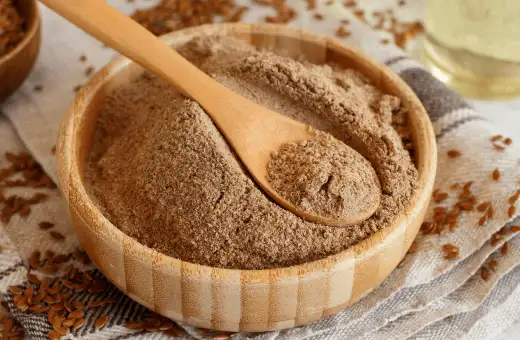
Ground flaxseed is a nutritious substitute for ground rice in Bakewell tart. It is a suitable source of omega-3 fatty acids and dietary fiber.
Ratio or measurement: To use ground flaxseed as a substitute for ground rice in Bakewell tart, replace the ground rice in your recipe with one-third the amount of ground flaxseed.
11. Ground Hazelnuts – An ideal substitute for ground rice in Bakewell tart
Ground hazelnuts are an excellent substitute for ground rice in Bakewell tart if you’re looking for a unique flavor.
Ratio or measurement: You can use an equal amount of ground hazelnuts instead of ground rice.
Ground hazelnuts will give the filling a sweet and nutty flavor that complements the almonds. However, it’s more expensive than ground rice and can make the filling slightly heavier.
12. Graham Cracker Crumbs – similar to ground rice in Bakewell tart
Graham cracker crumbs are an excellent substitute for ground rice in Bakewell tart if you’re looking for a quick alternative.
Ratio or measurement: You can replace the ground rice with an equal amount of graham cracker crumbs.
Graham cracker crumbs give the filling a sweet and nutty flavor that works well with the almonds. However, it can make the filling slightly denser.
How to Choose the Most Suitable Substitution Option for ground rice in Bakewell Tart
When choosing a substitution option for ground rice in Bakewell Tart, consider the following tips:
1. Texture: Ground rice provides a slightly grainy texture to Bakewell Tart. Look for substitutes that can offer a similar texture. Options like fine cornmeal or semolina flour can provide comparable graininess.
2. Flavor: Ground rice doesn’t contribute much flavor to Bakewell Tart. Therefore, you have more flexibility in choosing a substitute.
Consider alternatives like almond flour, all-purpose flour, or a combination, depending on the desired flavor profile.
3. Ratio and Absorption: Adjust the ratio of the substitute based on its absorbency and texture. Ground rice absorbs moisture and helps bind the tart.
Experiment with the amount of substitute to achieve the desired consistency and ensure proper moisture absorption.
4. Almond Flavor: Bakewell Tart has a distinct almond flavor. If you want to maintain that characteristic, consider using almond flour or a combination of almond flour and another substitute.
This will help preserve the nutty taste.
5. Recipe Adaptation: Adapt the recipe by replacing ground rice with the chosen substitute in an equal amount. Pay attention to the texture and adjust the moisture level if needed.
You may require to add more or less liquid to achieve the right consistency.
6. Allergies and Dietary Restrictions: Take into account any allergies or dietary limitations when selecting a substitute.
If a person has a nut allergy, avoid using almond flour and opt for alternatives like all-purpose flour or gluten-free flour blends.
7. Experiment and Adjust: Conduct small-scale tests with different substitute options to evaluate the texture, flavor, and overall result. Tasting and adjusting the recipe will help you find the most suitable substitution for ground rice.
Remember, the substitution may alter the texture and flavor slightly, but with experimentation and adjustments, you can find a suitable alternative that still yields a delicious Bakewell Tart.
vegan substitute for ground rice in Bakewell tart
1. Coconut Flour
Coconut flour is created from finely ground coconut meat and is a great vegan alternative to rice flour.
It’s increased in fiber and protein, low in carbohydrates, gluten-free, and has a sweet earthy flavor that pairs nicely with the almond extract found in many Bakewell Tart recipes.
2. Almond Meal or Almond Flour
This substitute for ground rice provides a nutty flavor that works perfectly in a Bakewell Tart.
It is created from ground almonds which are naturally gluten-free and high in protein and healthy fats, making it an ideal alternative to white rice flour.
3. Oat Flour
Oat flour is created from finely ground oats, which have a mild flavor that complements the other flavors found in a Bakewell Tart.
It is also high in fiber, gluten-free, and contains more nutrients than regular white rice flour due to its whole-grain content.
4. Buckwheat Flour
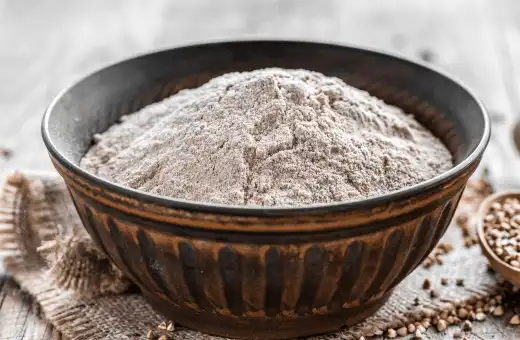
Buckwheat flour has an earthy taste with a subtle sweetness that works well when baking a Bakewell Tart.
The flour is high in antioxidants, amino acids, vitamins, minerals, and soluble fiber – all of which add nutrition as well as texture to baked goods like Bakewell Tarts.
5. Quinoa Flour
Quinoa flour has a slightly nutty taste with hints of sweetness which makes it perfect for baking a vegan-friendly bakewell tart recipe!
It’s also packed with essential minerals like magnesium, calcium, fiber, and protein, so you can feel good about consuming it!
6. Chickpea Flour
Chickpea flour is a great gluten-free option for white rice flour and has a mild nutty flavor that works well in Bakewell Tarts.
It’s high in protein and fiber, contains iron and zinc, and adds depth of flavor without overpowering the tart.
7. Coconut Sugar
Coconut sugar is an unrefined sweetener from coconut palm sap with a caramel-like flavor that goes perfectly with Bakewell Tart filling!
It’s lower on the glycemic index than refined sugars, so it won’t spike your blood sugar levels as much as regular sugar does, making it a healthier option for baking.
8. Maple Syrup
Maple syrup is a natural sweetener created from the sap of maple trees. It has a different flavor that works well with almond extract in Bakewell Tart recipes.
It is lower on the glycemic index, has minerals like manganese and zinc, and adds moisture to your tart, making it extra delicious!
9. Arrowroot Powder
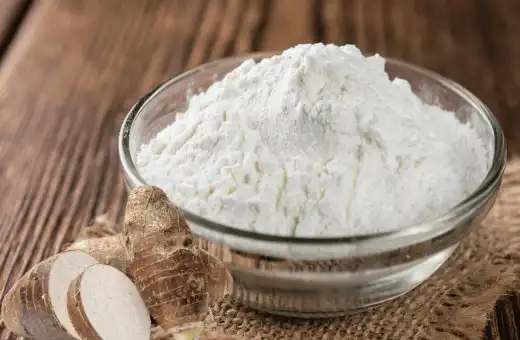
This gluten-free starch derived from tropical tubers is great for adding thickness and creaminess to Bakewell Tart fillings without changing the taste or texture.
Arrowroot powder is high in fiber, vitamin B6, potassium, magnesium, and other essential nutrients, which can help make this dessert even healthier than traditional versions.
10. Applesauce
Applesauce is a great vegan substitute for butter in a Bakewell Tart recipe, and it adds extra sweetness and texture that compliments the other flavors.
Applesauce is low in fat and calories, contains antioxidants and dietary fiber, and can help to bind ingredients together for an even better-tasting tart!
11. Flaxseed Meal
Flaxseed meal is ground flaxseeds which are high in omega-3 fatty acids, protein, vitamins B1 & B6, magnesium, zinc and iron.
It also helps to bind ingredients together, making it perfect for binding the wet ingredients of a Bakewell Tart filling.
Flaxseed meal has a nutty flavor that pairs nicely with the almond extract found in many recipes as well as adding nutrition to your tart.
Substitute for ground almonds in Bakewell tart
1. Ground Hazelnuts: Ground hazelnuts can provide a similar nutty flavor and texture to ground almonds.
2. They can be used as a one-to-one replacement in the recipe. Keep in mind that hazelnuts have a slightly different flavor profile, so the resulting taste of the tart may have a subtle variation.
3. Ground Walnuts: Ground walnuts can be used as an alternative to ground almonds. They offer a rich, earthy flavor that complements the other ingredients in Bakewell Tart.
Use them in the same proportion as the ground almonds in the recipe.
4. Ground Pecans: Ground pecans can also work well as a substitute for ground almonds. They provide a slightly sweeter and buttery flavor that adds a delightful twist to the tart.
Adjust the quantity as needed to match the recipe requirements.
5. Ground Sunflower Seeds: If you have allergies or prefer a nut-free option, ground sunflower seeds can be a suitable alternative.
They offer a mild nutty flavor and can provide a similar texture. Use them as a one-to-one replacement for ground almonds.
6. All-Purpose Flour: If you prefer a non-nut option, all-purpose flour can be used as a substitute. While it won’t contribute the same nutty flavor, it can help provide structure and texture to the tart.
Replace the ground almonds with an equivalent amount of all-purpose flour.
Conclusion on substitute for ground rice in Bakewell tart
Bakewell tart is a delicious dessert that everyone can enjoy, regardless of dietary restrictions.
With these 23 fantastic alternatives for ground rice in Bakewell tart, you can now enjoy this classic dessert without compromising on taste.
Each of the substitutes mentioned in this blog post comes with its unique flavor and texture, adding a twist to the recipe.
So whether you choose almond flour, polenta, or coconut flour, you are sure to create a delicious Bakewell tart.
Enjoy!
FAQs on substitute for ground rice in Bakewell tart
Q1. What is similar to ground rice?
Ground oats and millet are similar to ground rice. Both grains can be cooked in a similar way and have a mild, nutty flavor.
Oats are higher in fiber, iron, folate, thiamin (vitamin B1), magnesium and zinc than rice, while millet is richer in protein and healthy fats than rice.
Both offer more complex carbohydrates than white or brown rice, making them a healthier alternative for those looking for an easy grain-based side dish or meal replacement.
Q2. What can I use rather than rice flour for sourdough?
Baking with sourdough can be a great way to make your baked goods healthier and more flavorful. Instead of using rice flour, there are various other options that can use in the sourdough process.
Rye flour is an excellent choice for sourdough baking and has a slightly nutty flavor that adds complexity to the finished product. Other alternatives include spelled flour, buckwheat flour, millet flour, oat flour and cornmeal.
Each of these flours has unique properties and flavor profiles that add depth and complexity to your sourdough baking endeavors.
Additionally, you may also consider adding some nuts or seeds to your mix for added texture and flavor.
Regardless of which type of flour you choose, incorporating it into the starter for your sourdough will result in a complex and delicious crust with a chewy interior.
Q3. What can I use rather than rice flour for thickening?
Alternatively, you can thicken your recipes with other flour, such as cornstarch, arrowroot flour, or tapioca starch.
Cornstarch is a typical thickening agent that is created from the starchy endosperm of corn kernels, and it helps to create a glossy texture when cooked. Arrowroot flour is another great option for thickening liquids, as it has a neutral flavor and creates a clear finish.
Additionally, tapioca starch can be used to thicken sauces and gravies as it provides a glossy texture without any added flavor.
Each of these alternative options provides a different texture and appearance than traditional rice flour, so make sure to experiment to find the perfect combination.

